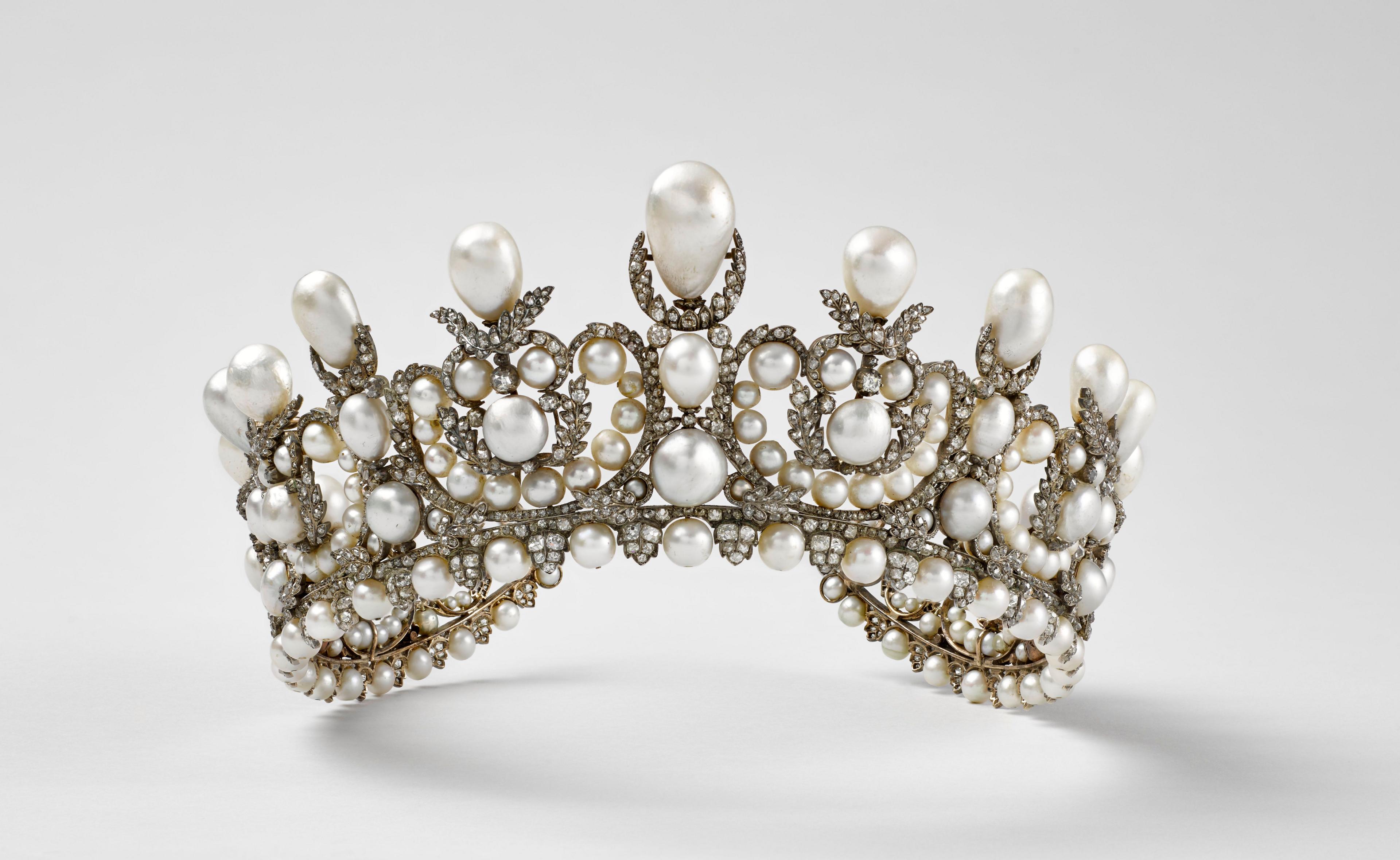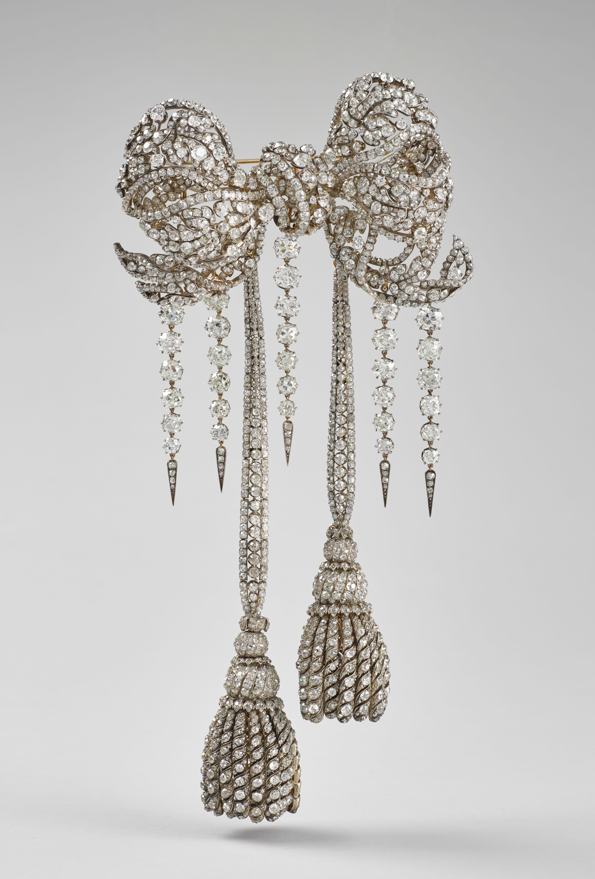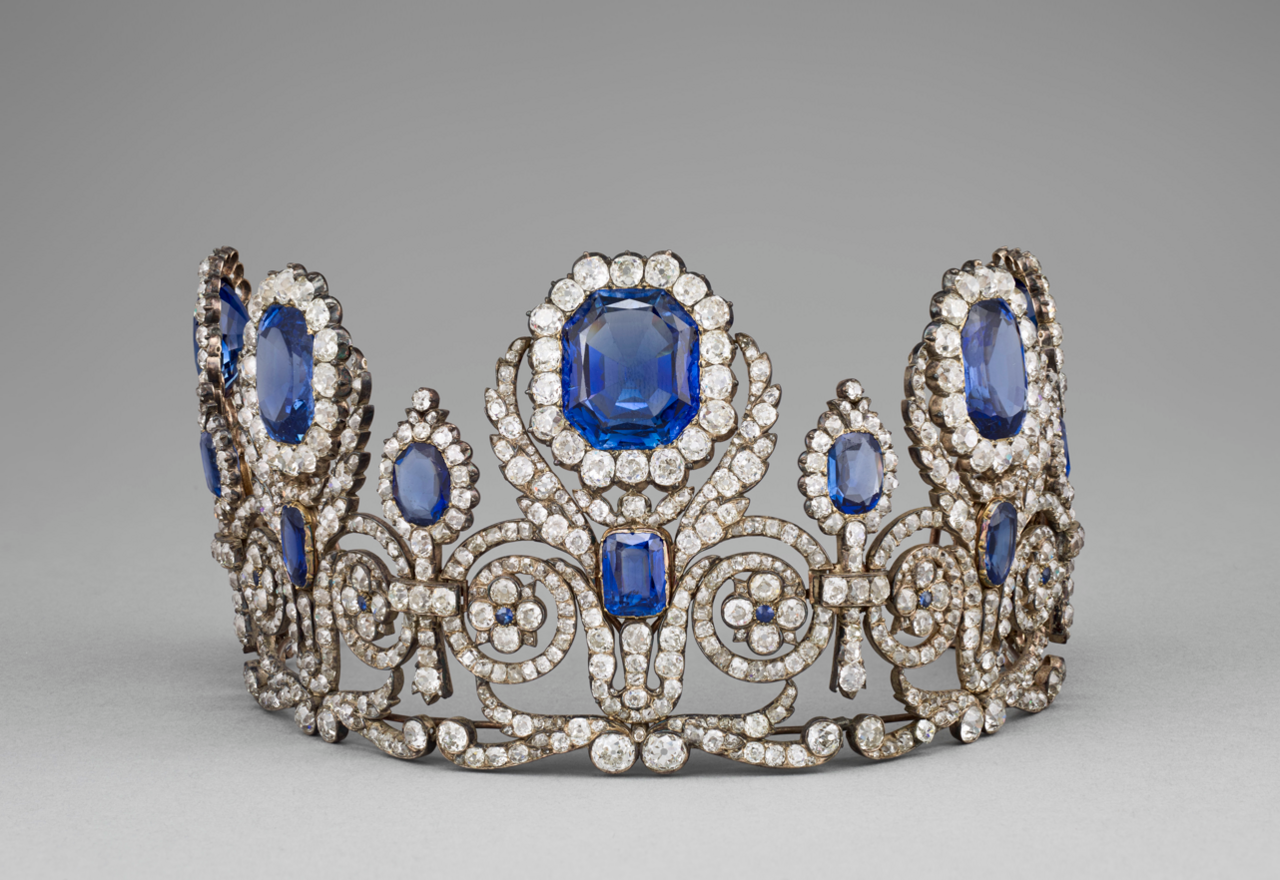Two more charged over Louvre jewellery heist

Precious crown jewels including the Parure Marie-Amélie diadème are yet to be recovered
- Published
Two more people have been charged over a theft at the Louvre Museum last month, the Paris prosecutor's office said.
A 38-year-old woman has been charged with complicity in organised theft and criminal conspiracy with a view to committing a crime. Separately, a man, aged 37, was charged with theft and criminal conspiracy. Both denied any involvement.
Two men who had previously been arrested were already charged with theft and criminal conspiracy after officials said they had "partially recognised" their involvement in the heist.
Jewels worth €88m (£76m; $102m) were taken from the world's most-visited museum on 19 October.
Four men carried out the lightning-quick daylight theft.
Two of the alleged thieves - who had been arrested earlier - later admitted their involvement.
The French public is relieved to see quick progress in the investigation - but many see the whole episode as a humiliating embarrassment for the country.
- Image source, Louvre Museum

Image caption, The Marie-Louise necklace and a pair of earrings were among the eight items stolen
1 of 6
On Saturday, the woman who has been charged was in tears as she appeared before a magistrate and confirmed that she lived in Paris's northern suburb of La Courneuve, a journalist working for the AFP news agency reported.
The magistrate later ruled that the woman - who has not been named - must stay in custody.
The 37-year-old man - whose identity has also not been revealed - was also ordered to stay in pre-trial detention. He is known to the French justice system for past robberies.
In the French judicial system, a suspect "placed under investigation" will normally - but not necessarily - end up facing trial. An examining magistrate is designated to lead the "investigation" into the person, looking in theory at material that might exculpate as well as incriminate.
In the meantime, the suspect can remain in detention if a judge believes he or she is a potential danger to the public, or might abscond, or might collude with others to arrange evidence.
This last argument was used to justify the continued detention of the 38-year-old woman.
The alleged role of the second suspect - the 37-year-old man - is not clear. But when the five were detained on Wednesday, the prosecutor's office said that one of them was linked by DNA to the crime scene.
Probably therefore he is suspected of being one of the two men who stayed on the street during the heist.
The fourth involved at the scene has not yet been caught.
Three other people held earlier this week have been released without charge.
Watch: Two people leave Louvre in lift mounted to vehicle
On the day of the heist, the robbers arrived at 09:30 (07:30 GMT), just after the museum opened to visitors, Paris prosecutor Laure Beccuau said last week.
The suspects arrived with a stolen vehicle-mounted mechanical lift to gain access to the Galerie d'Apollon (Gallery of Apollo) via a balcony close to the River Seine. The men used a disc cutter to crack open display cases housing the jewellery.
Prosecutors said the thieves were inside for four minutes and made their escape on two scooters waiting outside at 09:38, before switching to cars.
One of the stolen items - a crown - was dropped during the escape. The other seven jewels have not been found.
The fear is that they have already been spirited abroad, though the prosecutor in charge of the case has said she is still hopeful they can be retrieved intact.
Preliminary results of an enquiry into the robbery were released by Culture Minister Rachida Dati on Friday.
She said that for years museum authorities had "gravely underestimated the risks of intrusion and theft", promising that new measures would be in place by the end of the year.
Shortly after the theft it was revealed by the Louvre's director that the only camera monitoring the Galerie d'Apollon was pointing away from a balcony the thieves climbed over to break in.
The president of the Louvre, Laurence des Cars, has since admitted the museum had failed in its responsibilities, but denied that security had been overlooked - saying that from the time she took office in 2021 she had been warning constantly of the need for more investment.
She also said the main weakness in the security arrangements for the Galerie d'Apollon was the lack of security cameras on the perimeter of the Louvre. But this, she said, was the responsibility of the city of Paris - not the Louvre itself.
However, critics have accused des Cars of being too interested in her ambitious renovation plan for the museum - dubbed the New Renaissance - which will see a new entrance as well as a separate gallery for the Mona Lisa.
They say money that should have gone for basic protection of the site has been kept in the bank to finance the new project.
Since the incident, security measures have been tightened around France's cultural institutions.
The Louvre has transferred some of its most precious jewels to the Bank of France following the heist.




